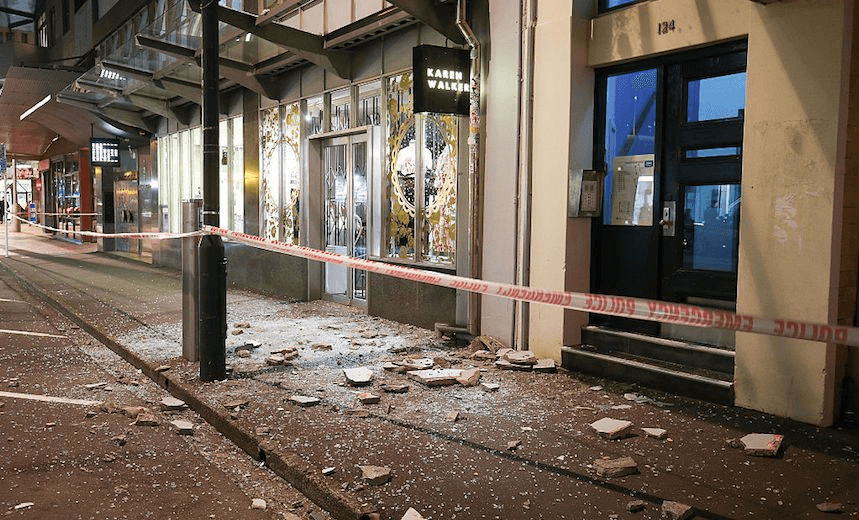Barely a month into his mayoralty, Justin Lester found himself leading a major disaster response following the 7.8 Hanmer Springs earthquake. He looks back at how the city handled the quake and its aftershocks, and lays out what can be done better next time – because there will be a next time.
Last week’s earthquake means Wellington has some major work ahead of it.
First there is the challenge of the immediate response – making sure all of the damage is mitigated and repaired and that people whose lives were disrupted by the quake are supported. This has been an immensely difficult time for our city and I know that many people are still anxious and worried about the future.
As hard as it’s been, I’m proud of how our city has come together over the last week to get on with this job. From the excellent team who ran the emergency response to the scores of police and firefighters and engineers who worked around the clock, to our tireless council staff and the thousands of Wellingtonians who mucked in, volunteered and checked on their neighbours and friends. We’re a city of people who look out for each other and that’s shone through in the last week.
This has been a major job but it’s just the beginning. The bigger task is getting our city ready for the future and preparing ourselves for more events like this.
This doesn’t just mean preparing for the inevitable aftershocks that come from a 7.8 earthquake. It’s about making sure we are ready for bigger, even more damaging quakes in the future.
Despite the fact that this has been one of the largest earthquakes in our city in the last 100 years, we have to remember it was caused by a shift in upper South Island faultlines. An earthquake on faultlines closer to Wellington could be much worse and have a far bigger impact on our city.
We all love Wellington – it’s one of the most beautiful cities in the world – but we need to be realistic that we live in a geologically uncertain area.
We need to be making the right investments in our infrastructure – our water and electricity systems, our roading and transport networks, and our built environment. Thankfully, most of these held up relatively well to last week’s earthquake. Most Wellingtonians didn’t lose water or power for example, and the vast majority of our buildings performed well and suffered very little damage.
But there are lessons to be learnt. The first is that our city’s roading infrastructure is fragile, as we saw when heavy rain after the earthquakes closed state highways 1 and 2. That’s something we need to address and it’s why we are investing urgently in major transport projects like the Petone-Grenada Link and Transmission Gully. These new projects will mean more approaches to and from the city in the event of an emergency.
Secondly we need to weed out the buildings that can’t stand up to powerful earthquakes. It is worrying that some of the buildings that have suffered significant damage have actually been built relatively recently.
We’re writing to all building owners asking them to ensure urgent structural checks are completed, that they inform the City Council of the results, and reminding them of their obligations to provide clear information to their tenants.
We’re also urgently putting together a more thorough database of every building in the city and how they’ve performed in this event. Every landlord in the city must invest in making sure their building is prepared for future earthquakes. We’re also in close contact with the Government about new legislation to give us more power to ensure this is done.
The next step for the Council is to identify other long-term investments we can bring forward to help us prepare.
We’re pulling together a list of projects that can help our city better respond and recover in the future. This is going to be a key area of focus for us and we’ll be moving rapidly to identify and prioritise projects that can help.
Finally, I want to urge every Wellingtonian to make it a priority to do their own disaster preparedness work. That means getting an emergency preparedness kit for your home. It means talking through with your family what everyone will do in the event of a big earthquake. It means practising drop, cover and hold with your children so they know what to do.
I was really pleased with the huge increase in the number of people buying emergency water storage containers from the Council in the past week and I hope that continues. It’s up to all of us to make sure we are prepared and that our own homes and businesses have a plan.
It’s probably fair to say that just over a month into the job as Mayor, I wasn’t expecting a major earthquake to be one of the first orders of business. But I’m proud of the way our team and the whole city have responded and the resilience and community spirit people have shown.
Now, we need to make sure we learn the necessary lessons and get to work preparing for the future.


